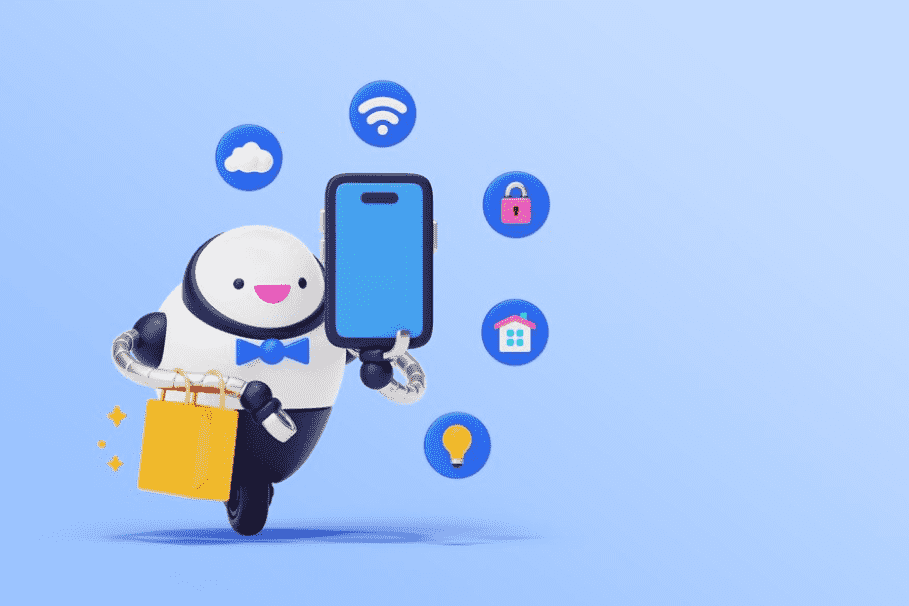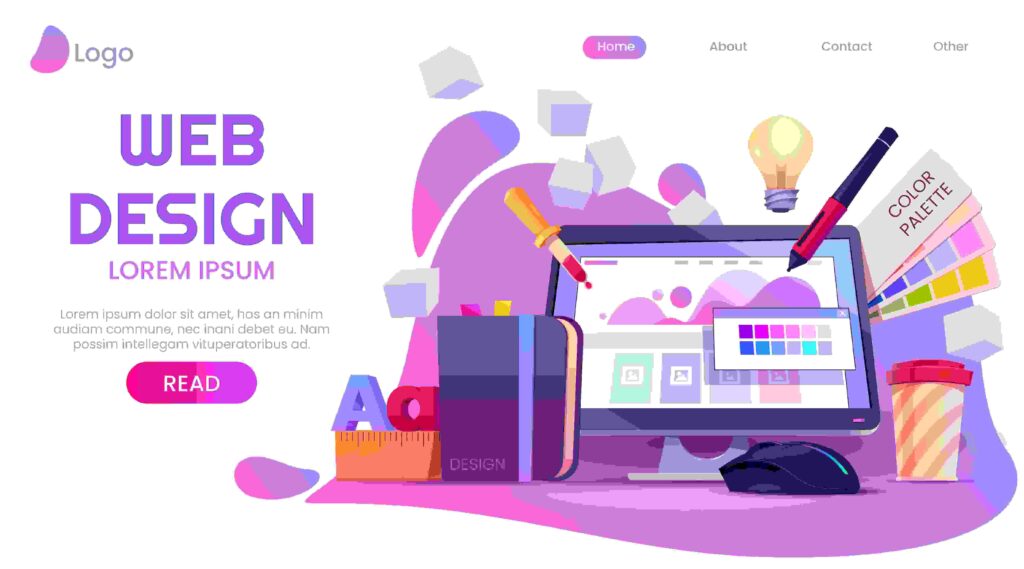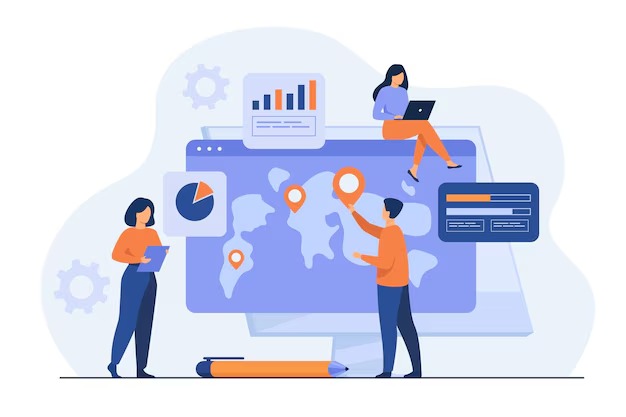
What are the 7 Best ChatGPT Plugins to get more views and sales
Sometimes, it becomes really head-spinning for the new entrepreneurs and creators to sort out the marketing graphical content and business writing. Some of them give

Do you remember the idea of the last big purchase you made? You likely had a problem or need in mind, and did a bit of research to find out how you could fix it. So, then made the purchase from the social media post. It’s a classic example of inbound marketing through social media. Cloud Vertix discusses the best possible explanation of what makes social media so crucial for inbound marketing. Let’s find out how it influences your brand in terms of audience outreach for ROI.
Inbound marketing is a non-intrusive kind of marketing. It is based on the provision of the relevant content at the right time. Inbound marketing involves attracting users to a website through content that moves them alongside the buyer journey. Instead of going for the users, we let the users find us. Inbound marketing is an all-covering term to describe many other forms of marketing. The sister terms are:
The SEO and marketing experts here at Cloud Vertix pronounce l three focal reasons why social media is an important part of inbound marketing. Social media is without a doubt a very optimal part of inbound marketing. Many consumers find out about brands and businesses through this platform. It is a great space to provide information about products and companies. Creative use of social media, like conducting quizzes and polls, interactive content, and attractive images, are all influential for inbound marketing. One major motive is to attract and engage customers in business.
Exceptional Reach-out
All you have to do is create engaging content and post it online. People will start searching and following the business. The reach of a business through social media is exceptional. Within a matter of seconds, you can reach hundreds of people. However, the reach of your business depends on how you handle the account. In less time, you can reach more people with social media only with an active online presence. Creative content will generate curiosity in the consumer to attract more target audiences to the business. Small and large-scale businesses can now focus on inbound marketing for efficient performance. It is also smart to work on social media for inbound marketing. It’s the perfect combination, as inbound marketing subjects to customer engagement while social media is the best place to engage with a broad range of customers.
Best Place to Retain Customers
Interactive marketing is very beneficial in customer retention. It is a crux to connect with the target audience and keep in touch with them. In direct selling, customer engagement works best through social media, except for direct marketing. Even though direct marketing has its benefits, it is impossible to frequently meet with customers directly for marketing. Time alongside money with interest plays a primary role in direct marketing. Moreover, it’s more of an outbound marketing. On the other hand, examples of inbound marketing are:
That’s right, and social media is a classic example of interactive inbound marketing.
Expand the Target Audience
If you plan to expand the target audience, then social media is the best place to start. A direct seller can try to expand their business at a certain point. One way to do that is by expanding the target audience. Even if you prefer the hybrid working model with online and direct marketing, you can still start online. It is particularly apt in the case of expanding the target audience. It will introduce your business to a new area among the new target audience. You should use social media for inbound marketing for considerable impact because it will attract new customers to the business.
You have learned what is inbound marketing, is it something different from traditional marketing? Is it something new? Is it the same thing but with a different name, with a cool name? Basically, inbound marketing is the opposite of your traditional marketing strategies.
Traditional Marketing
In a traditional marketing strategy, you would interrupt someone else’s pattern. If you wanted to capture a prospect or a lead, you would send them an email, send them a mail before the internet, cold call them, or even door knock, depending on what was your product or service.
Evolution with Technology
With the appearance of cell phones, smartphones, and other devices, and when people started searching for information online and surfing the web for different reasons, as well as the appearance of social media, the strategy changed. The strategy now focuses on creating valuable content for your audience that resonates with them so they eventually decide to work with you further or to purchase one of your services or products.
Basically, inbound marketing is to influence your audience to explore more about you, rather than trying to push someone into doing something, you will try to pull them. You will try to attract them with your brand personality or with your story even with different resources that you can put out. All these are to build goodwill with your audience so they can eventually decide to work with you.
Build Brand Authority and Credibility
The other thing is that now that information is available to everyone, there are a lot of choices. There’s plenty of choices or information out there. So people are doing business with people they know, like, and trust. In the past couple of years, your brand authority was built if you were part of a big corporation or if you had a title attached to your name. But now the scenario has changed, people are doing business with people. So that’s why it’s important to build your authority and credibility and to share valuable information with your audience.
Create Valuable Content
Let us quote another imperative aspect of inbound marketing. The aspect is that you don’t need to just post content for the sake of mere product. Instead, it should be for your audience and potential customers. It’s not only a matter of sharing whatever information or resource you can find; rather it’s up to sharing valuable information and understanding the stage your prospect is in. So it’s a focal factor to create content that is more general and speaks to a broader audience. This is how it is also more specific towards a problem or solution that you help your customers with.
The last thing to keep in mind is that inbound is not against outbound marketing. They are not opposite strategies. You can eventually use both. The goal is to have a lot of strategies in place or the most complete strategy, so you can target your audience through different messaging and channels. This way, they keep seeing you out there.
The good thing about the internet is that your content. Once it gets created, the audience can see it over and over again. That’s why our team declares it to be important to hire a trusted inbound marketing agency. You will attract a lot of people, once you start creating enough content and putting enough value out there. You will attract your audience, and they will decide to work with you. That all becomes possible with the power of the Internet.
Focus on a Specific Niche
You need to remember that if you focus on a specific niche or on a specific avatar, you will get better results. It’s not easy to speak to everyone in this world. You are speaking to no one If you speak to everyone. Thus, you won’t get as good results as you could either. So it’s imperative factor to focus on a specific audience to get a solution to a specific problem you solve. Thus, it will keep adding value all the time.
Inbound marketing has four stages. We will explain everything about inbound marketing from what it is, and its four stages, to the three major keys. Let’s get started.
Attract
Users get attracted to your website through interesting or relevant content at this stage. Such kinds of content may be in the form of:
The important thing is that it builds trust with users in our brand. That is how we turn a stranger into a regular website visitor.
Convert
We then move to the concert stage, which is where we use more content that will certainly help the user to solve the problem at hand but would let us get a little more information from the user. Much of the time, this type of content has to be downloaded with a form, and it’s what turns a visitor into a lead. Cloud Vertix ushers the brands to differentiate branding content to promote your products.
Close
In the close stage, we use lead nurturing, lead scoring, marketing automation, and relevant content to help the user make a purchase and power through the buyer journey into being a customer. There, we turn our leads into customers.
Delight
Finally, inbound marketing doesn’t end with the sale. We want to make sure we’re always delighting the customer, the last stage of inbound marketing. Cloud Vertix still uses inbound techniques with the integration of social media marketing to help foster loyalty at this stage. Remember, it’s much easier to keep a customer than earn a new one.
Key One: Content
This is huge in stage one and stage two. It is how you attract users to your website and also how you convince them to give you their information. Because content is so important, two huge factors within inbound marketing are content marketing and SEO. We want to always be generating new, relevant, and engaging content that is SEO-friendly so that users can find your content on the search engines. Examples of user-attracting content are:
These are some examples of what works well for converting users into leads.
Key Two: CTAs, Forms, and Landing Pages
Now, about converting—how do you get this information to turn these users into leads? That is where CTAs, forms, and landing pages come in. A call-to-action is simply a small piece of text, an image, or even a button that you can embed within your content to drive users to perform a certain action. It is like downloading an e-book or registering for a webinar. When users click on these buttons, they then get taken to a landing page.
How Landing Page Helps Bring Traffic?
A landing page is where you host information about a piece of content, and where your form exists. It enables users to get more information about the content that your website is offering, and then when they decide that they want to get it. They have to fill out a form. It’s not just a traffic thing; it’s users who come to the page and fill in your form. Additional information about the lead is given by the form. Normally, it will ask the lead questions such as name, job position, company, and any information that may be pertinent to your sales team.
Key Three: Marketing Automation
The final key to inbound marketing, however, is marketing automation. Marketing automation is what you use to help that lead make that final step into closing the sale. With marketing automation in inbound marketing, you can set up lead-nurturing emails, sales workflows, and lead scoring.
And there you have it. Just an introduction to what Inbound Marketing has to offer. All of these tactics and techniques that we have mentioned today can be done right on Cloud Vertex. If you’re interested in additional specific insight into how some of these particular tools work on the platform, head onto some of our other blogs or hit the subscribe newsletter. If you have more questions on inbound marketing or maybe have an idea of what services we can help you with, please, call us or leave a message. Our representatives of the digital marketing team will get back to you with solutions to your needs for online marketing for your brand.
Get updates and learn from the best.

Sometimes, it becomes really head-spinning for the new entrepreneurs and creators to sort out the marketing graphical content and business writing. Some of them give

Graphic design is one of the optimal factors of design. A graphic designer helps businesses and brands establish their index portrayals. You will encounter other

Are you looking to expand your business to increase your revenue? Designing and building a website is a great tool to help provided you observe

Do you remember the idea of the last big purchase you made? You likely had a problem or need in mind, and did a bit

As an entrepreneur you must be thinking to build your brand. In such a phenomenon, you must have heard a lot about branding and marketing.

If your brand lacks SEO protocols, your web team must be confronting challenges to boost your brand outreach. Search Engine Optimization (SEO) is the most
Lorem ipsum dolor sit amet, consectetur adipiscing elit.
All rights reserved © 2025 Cloudvertix.